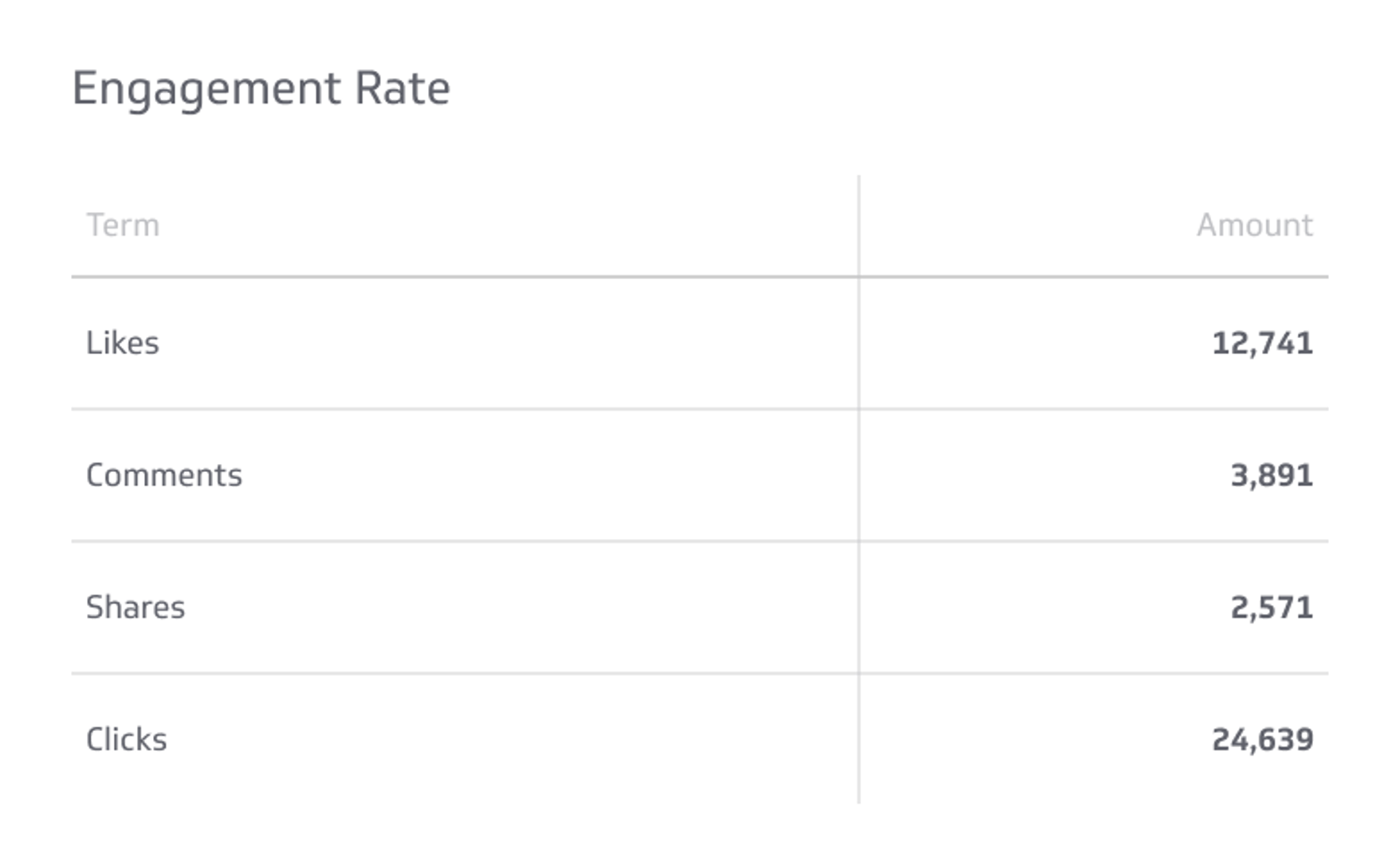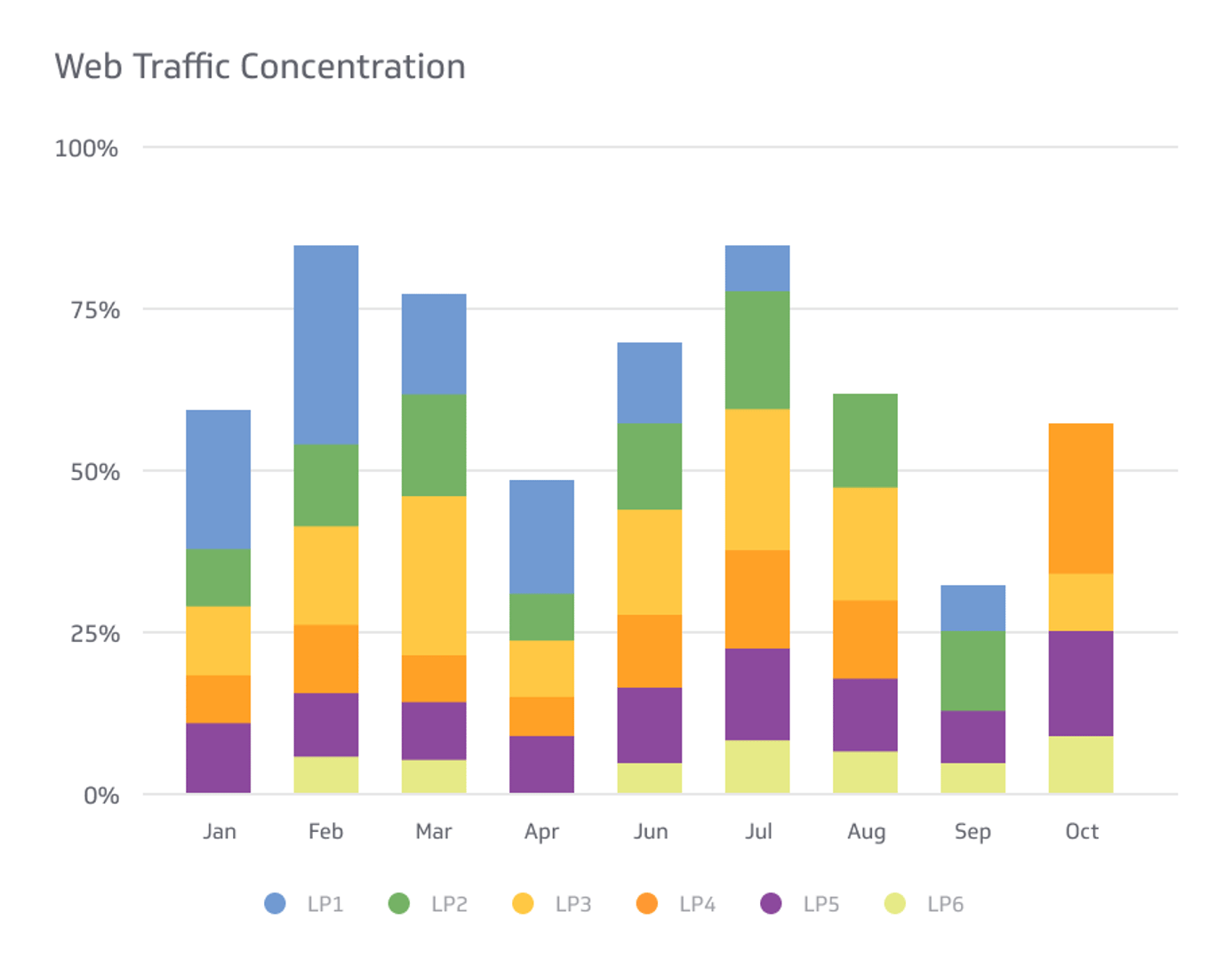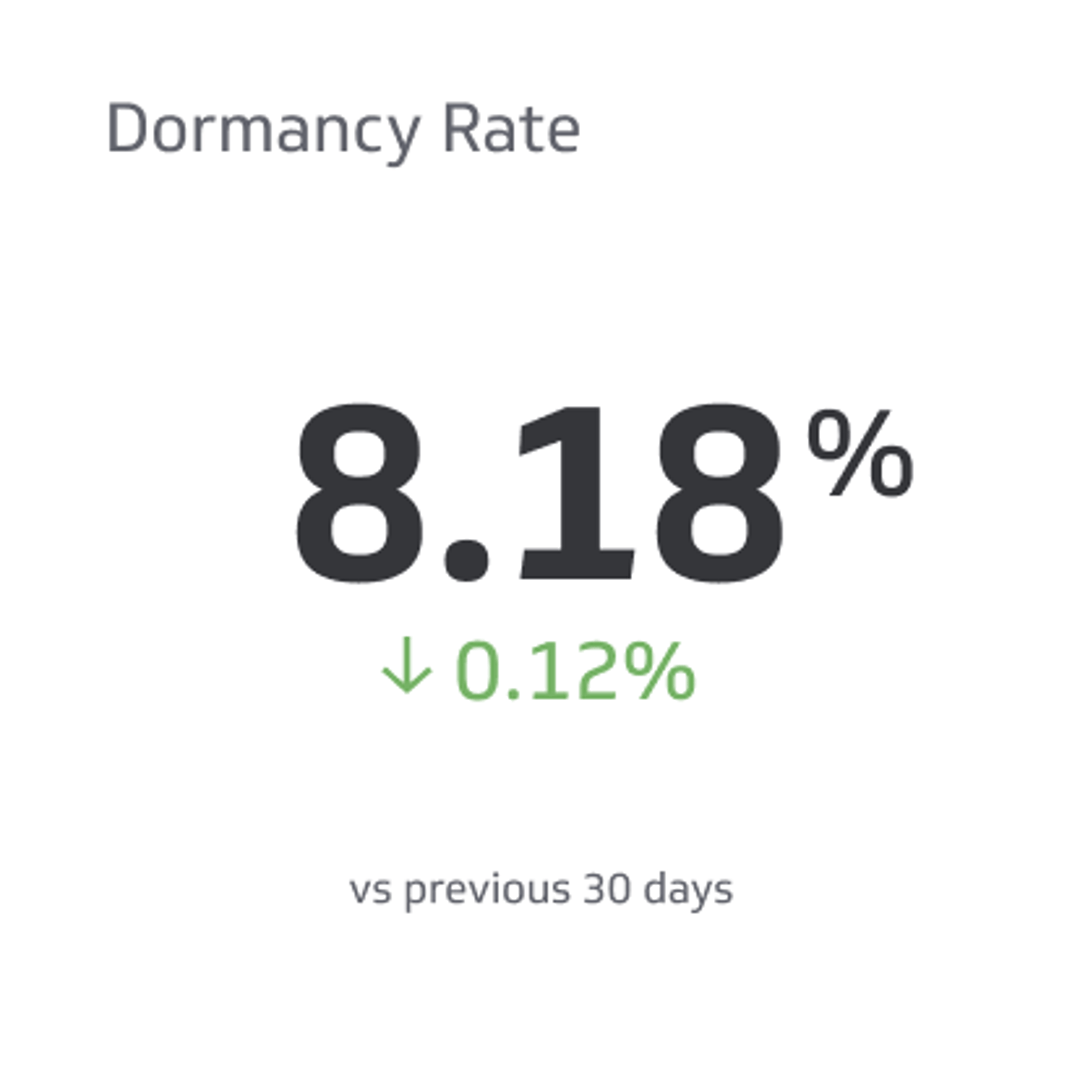Engagement Rate
Engagement rate suggests the degree to which audiences have directly engaged with the video.
Track all your Digital Marketing KPIs in one place
Sign up for free and start making decisions for your business with confidence.

In 2021, adults in the United States spent 167 minutes on average watching videos online.
With the advent of the technological age and the increasing popularity of social media apps, more content is consumed online than anywhere else.
Forbes recently reported that 83% of video content consumers would share videos that align with their interests, meaning this marketing area is still ripe for profit. This can be a huge way to market on a very low budget. So the more people that are interacting with the video content, the more likely that content is to be seen by other people.
For this reason, businesses are turning their attention to video marketing, disseminating promotions, and informational products across diverse channels.
For marketers, teams, and professionals, video engagement rate is a crucial metric. It allows businesses to gain a clearer understanding of how many individuals are interacting with their content. In turn, video engagement statistics enable enterprises to make better decisions, continuing to boost engagement—and revenue.
This guide includes everything you need to know about video engagement rate, including what it is, how you can measure it, and how to improve your metrics.
What Is Video Engagement Rate?
Many people need clarification on video engagement rate with video watch rate or viewer count.
However, while viewer count merely indicates how many people have watched a video, engagement rate suggests the degree to which audiences have directly engaged with the video. Engagement consists of impressions such as likes, shares, follows, subscriptions, link clicks, purchases, and more.
Some marketing professionals only consider the quality of engagement over time, as this typically offers more information than a simple, static metric.
There are many ways to measure video engagement, and you can represent this type of data in several ways, including figures and graphs. A firm understanding of video engagement rates can help you make the best choice for your company.
Video engagement is considered one of the most critical factors in determining how much of your content your audience will remember. To that end, it’s crucial to get it right. The higher the engagement rate, the more effective you can consider the video to be.
Who Uses This Metric?
The video engagement rate is an important metric used by many professionals across different industries.
These metrics are of particular interest to those working in marketing and promotional activities for business since they afford an inside look at the degree to which they can captivate their audience’s attention. Anyone that is attempting to grow their brand or business will want to pay close attention to their video engagement rate. This data allows a business to track what is catching people’s attention so they can either capitalize or pivot when necessary.
Why Is it Important?
Video engagement is a crucial metric for businesses.
Understanding your video engagement rate can give you a clearer picture of how, when, and why your audience interacts with your content.
Additionally, video engagement allows you to estimate how much a viewer will likely remember information from your content or remember your brand. Businesses that are able to create an emotional connection or bond with their customers are likely to see better returns.
Lastly, the video engagement rate allows you to make more educated decisions about future marketing campaigns and promotional videos, teaching you everything you need to know about what works—and what doesn’t.
How to Use Video Engagement Rate
There are many important uses for this metric.
First, you can use video engagement rate to determine the degree to which your video content has impacted your viewers. Audiences interact with content when it resonates with them, and they are more likely to engage with other content.
Engagement rate can also teach you more about the quality of your content. For example, if users are dropping off early, you know you’ll need to implement a better hook for your video.
You can pinpoint drop rates to optimize your content and your outreach method. Sometimes you can also break down your video engagement rate to determine precisely how audiences interact with your content through sharing, likes, follows, and more.
Factors Affecting Video Engagement Rate
Many factors can affect your video engagement rate. Consider the following before diving into your metrics.
Length
The length of your video can significantly impact the degree to which your viewers pay attention. Shorter videos have more engagement since they require less of an investment from the viewer. Longer videos, on the other hand, tend to experience drop-offs. However, this will depend on the brand and business. A more casual target audience might appreciate shorter content while a more professional audience might expect something longer and more thought out.
Quality
Video quality is a significant factor when it comes to video engagement.
Researchers have determined that high-quality setup and state-of-the-art technology significantly boost video engagement rates. People have come to expect a certain level of quality from companies. The bar has been set high and 480p resolution isn’t going to do it for people any longer.
If you’re representing a business, it makes sense to use a high-quality camera with high resolution and updated video editing software.
Audio
Poor audio is one of the main reasons viewers stop watching a video.
Videos with audio do better than those without. On the other hand, if audiences expect a silent video but there is background noise, it can be detrimental to engagement.
Audience expectation is everything, so you’ll want to set your viewers up to know what to expect.
Relevance to Target Market
The most important factor for video engagement is target market relevance.
Relevance has to do with the degree to which your viewers connect to your content. You can dissuade viewers from watching your videos if they are too specific or not salient enough. Capitalizing on trends, on the other hand, can help you boost relevance and engagement.
How to Calculate and Measure Video Engagement Rate
There are many different methods to calculate video engagement rates. Many platforms use video engagement metrics that are unique to them.
Each method provides different insights, so it’s best to acclimate to them.
Counting Impressions
You can calculate video engagement by counting the number of impressions a video receives. Impressions may include:
- Likes
- Shares
- Follows/subscribers
- Clicks
- Dislikes
- And more.
Simple Formula
The simplest method of calculating video engagement rate is by using the following simple formula:
Count (Video Views) / Count (Video Impressions)
For example, if your video gets 10,000 views and 4,000 people share it, you’ll have a 40% video engagement rate (very high!).
Video Engagement Graphs
Video engagement graphs are among the most popular methods of measuring video engagement over time. Major platforms like TikTok, Wistia, and YouTube all provide video engagement graphs to empower businesses and individuals to assess their performance.
These graphs consist of a visual representation of video engagement rate over time.
To understand a video engagement graph, you must know that videos are divided between the nose—the first few seconds—the body, and the tail—the last few seconds of the video.
A video engagement graph can reveal important data about audience interaction with your content.
For example, if most viewers drop off during the nose of your video, you haven’t created a compelling enough hook. If the majority of viewers drop off during the body, as is typical, audiences haven’t watched until the end.
Depending on the content of your video, you can determine what type of information is most compelling to your target market, allowing you to make better decisions moving forward.
How to Improve Video Engagement: Tips & Best Practices
There are innumerable tips and best practices that you can leverage to improve your video marketing capabilities.
Once you have the data available, it’s all uphill from there.
Edit Videos
The most important tip for improving engagement is properly editing your videos. Ensure that you cut any extraneous material from your content to avoid drop-offs, and remove any clips that might detract from the central message of your video.
Hook Your Audience
Research suggests that the first few seconds of your video matter most when hooking your audience, so be sure to include a captivating intro. This can be a make-or-break situation for many people because if the content is engaging from the start, the viewer is likely to click off to another video. Interesting facts, inside-industry jokes, or captivating anecdotes can help reel the viewer in deeper and help prevent them clicking off to something else.
Introduce or Edit Calls to Action
If your engagement rate is low, you may need more calls to action to prompt your audience to interact. You can also experiment with re-arranging your calls to act depending on where the drop-off is occurring.
Calls to action remind your audience to take action on the content they like, so it’s crucial to your video engagement rate.
Personalize Video Content
Personalizing your content is essential to keeping it relevant. To that end, research your target market and work to identify them personally in your videos. Determine what your competitors are doing so you can best choose a course of action.
Add a Soundtrack
Music is a compelling force in marketing, and adding songs to your videos can help your viewers feel more connected. Everyone can think of a popular jingle from a fast food chain. That jingle sticks in the brain and helps to create a bond with the customer and those jingles, sounds, or theme songs aren’t restricted to traditional media, think of applying that to online video.
Consider adding trending or popular tunes for added effect.
So, Why Is Video Engagement Rate Important?
The video engagement rate is one of the most critical metrics in all marketing.
This digital marketing metric can help you determine whether your promotional materials are reaching the right audience—and how that audience is responding.
To that end, it’s essential to understand how video engagement works and how you can boost your reach organically.
Once you have the data, you can use the tips provided in this guide to optimize your content according to the needs and values of your audience.
When it comes to marketing, experimentation is critical.
Related Metrics & KPIs



